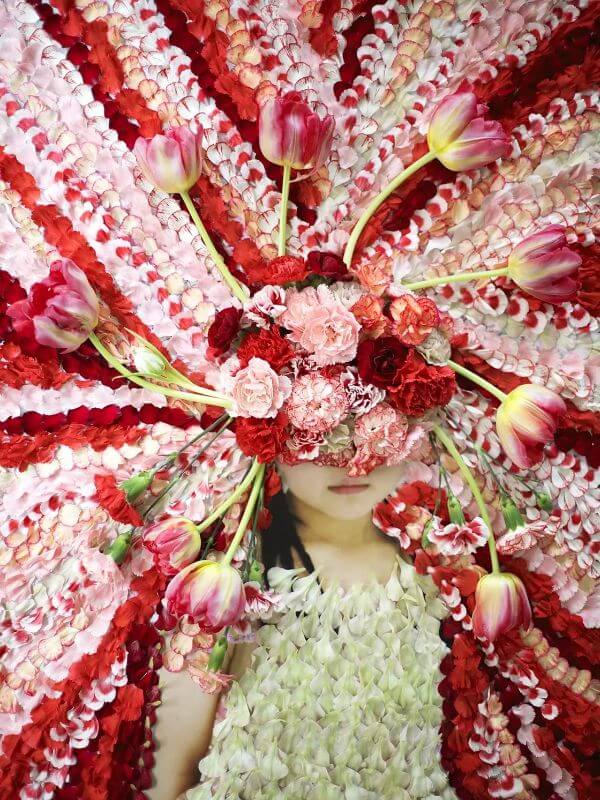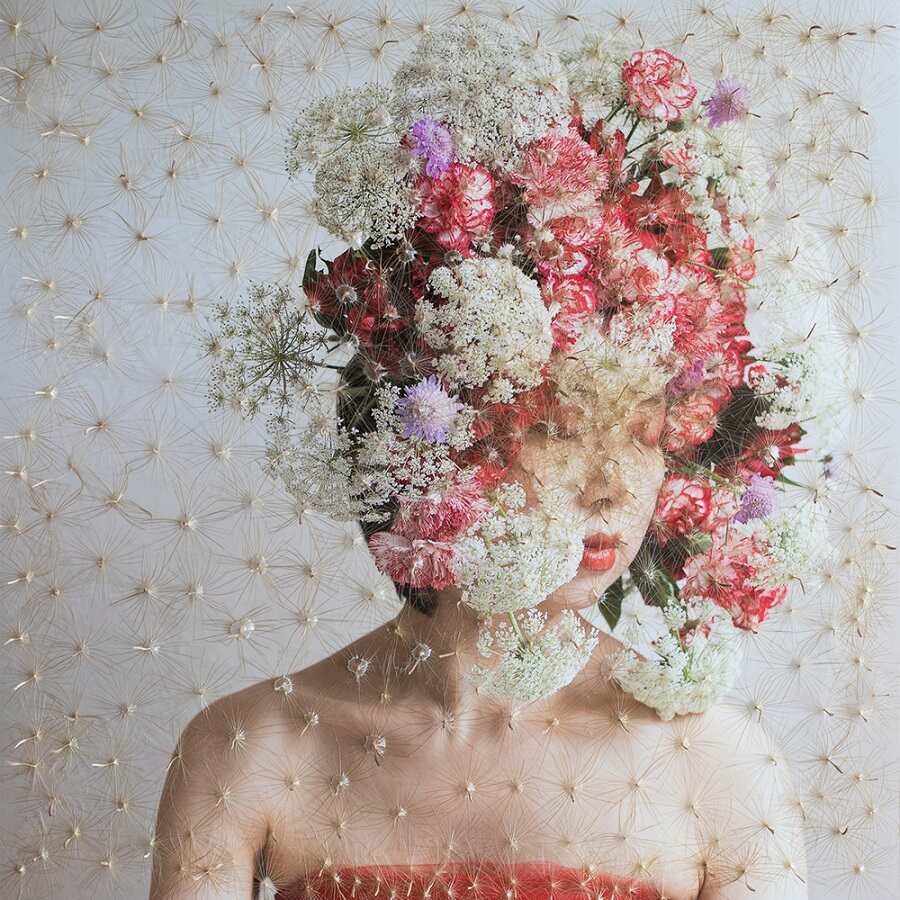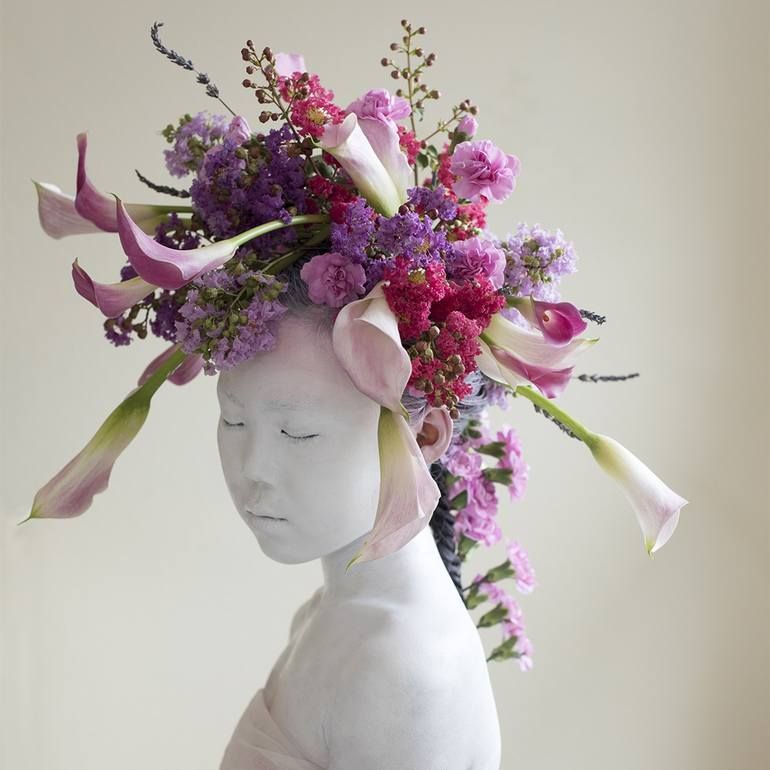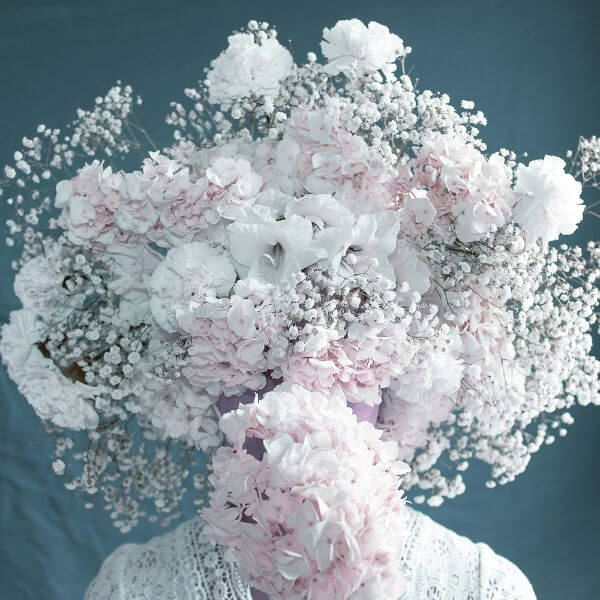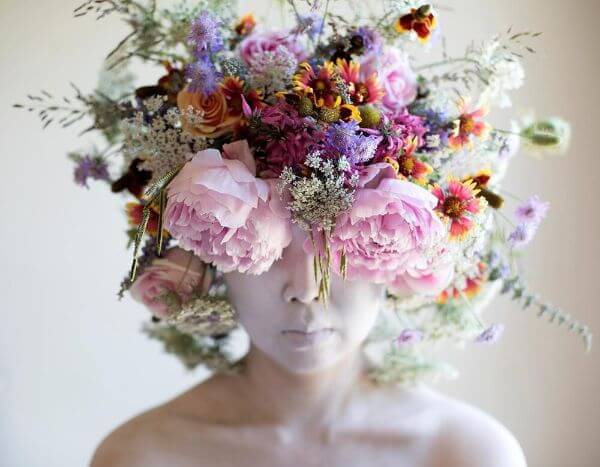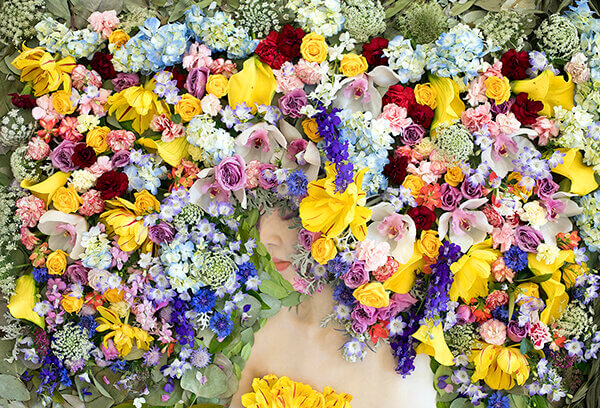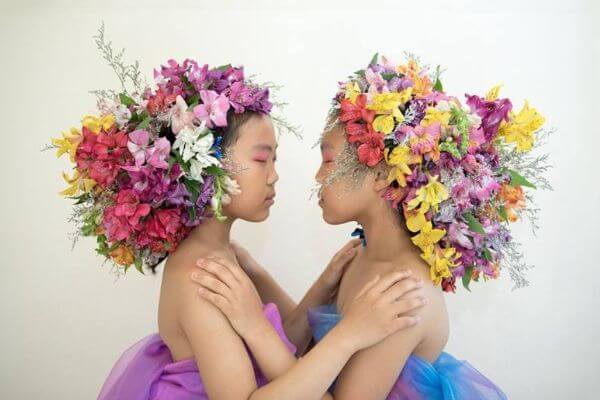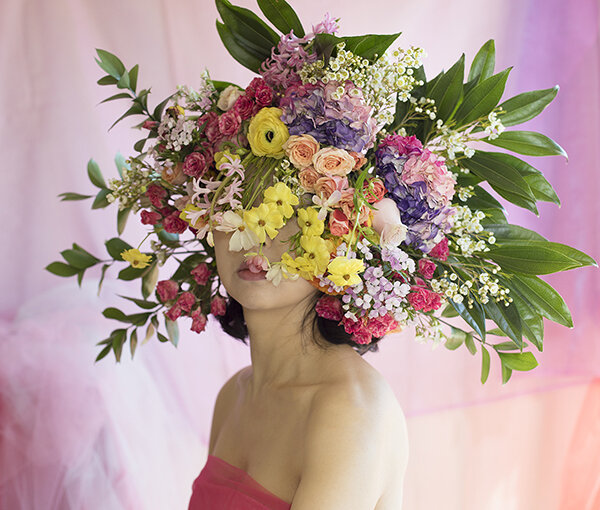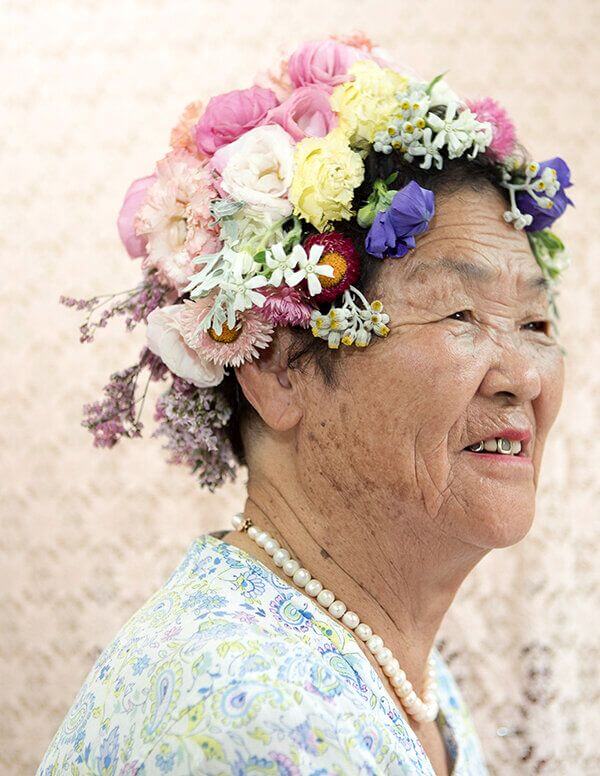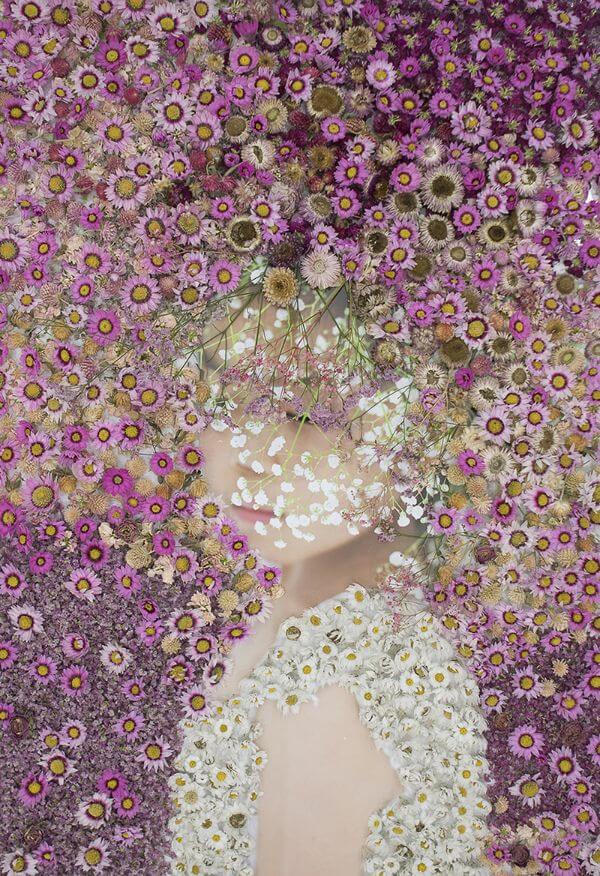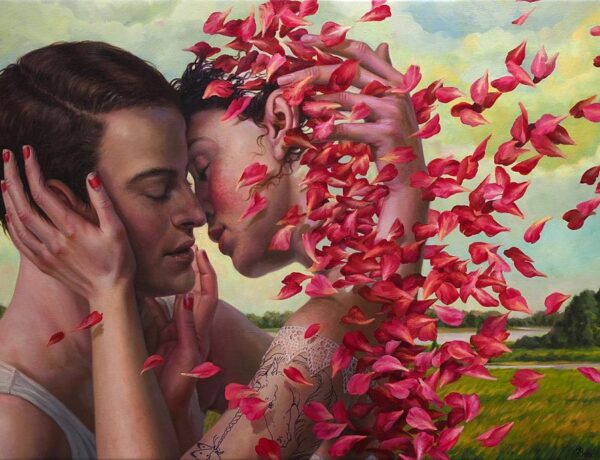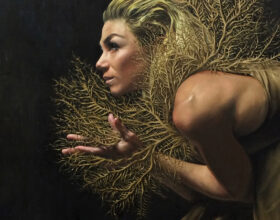A single flower can be a work of art in itself, but en masse they can be breathtaking. Their fleeting nature reminds us of our own transience, and their seasonal return reminds us of rebirth. Across the ages and for cultures all over the world, flowers have held meaning – they are a continuing source of joy, inspiration and consolation. For Korean artist Ziesook You, both flowers and humans are beautiful creations from God. Her work brings people and flowers together, reconnecting us to the beauty of nature.
Ziesook’s ‘Scent of Broq-pa’ series is inspired by the importance of flowers in a remote Himalayan village. The series has been constantly evolving since 2016, expressing ‘happiness through the co-existence of humans and nature’. Her study of painting and fine art is apparent from the painterly compositions in these photographs and her skillful use of colour. Blooms of all hues radiate from her human subjects, in a joyful celebration of nature’s abundance.
Seeking to reflect the unique identity of her subjects through these carefully selected palettes, Ziesook gives each person an individual floral aura. Regardless of their age or background, Ziesook captures the unique beauty of each person and their connection to nature.
My mother had also dreamed of becoming an artist, but poverty captured her dream. Fortunately, because of my mother’s dedication and life’s circumstances I can fulfill our shared passion.
How did you get started as an artist and why did you choose to focus on photography?
Since childhood, I have always dreamed of becoming an artist. The world is full of beauty and creating something new is fascinating. My mother significantly impacted my life’s work. She taught me to be a good observer and encouraged me to pursue the field of art. My mother had also dreamed of becoming an artist, but poverty captured her dream. Fortunately, because of my mother’s dedication and life’s circumstances I can fulfill our shared passion.
I also loved the movies very much. Becoming an artist allowed me to become an independent film director, and photography is a part of that. It’s wonderful to capture the moment that captivated me. Sometimes, capturing a moment has a bigger impact than writing or video. Photos and videos provide immediate feedback so I can communicate with people quickly. Photography is not only realistic, but also pictorial.
I majored in painting, but while working on photography and video, I am finding my own field at the border between photography and painting.
Each person has their own unique identity and their own colour. I imagine the colour a person has and try to find the right flower to represent him or her. A person’s colour is derived from my impression of them, their skin colour, a costume they wore that day, their makeup, or their belongings.
You have taken inspiration from the village of Broq-pa in your recent work. Can you talk about your experience of travelling in that region and why it was so inspirational?
I first learned of Broq-pa from a TV documentary, The Last Empire. When I travelled to India, Thailand, Laos, Vietnam, and China, I often saw people offering flowers to gods and decorating their hair with flowers. I thought that flowers were not only decorative and beautiful, but also had various meanings, so I began focusing on floral photography.
I have travelled to a lot of countries. During my travels, I especially enjoy exploring small villages and meeting the native people. I love to learn about the way of life in these different places. What I have discovered is that although we have different cultures and languages, we can still be connected by the power of art. Through my artwork I hope to make the world a brighter place.
Your photography reconnects us to the beauty of nature and creation. Is there a spiritual dimension to your work?
I think that both humans and flowers are beautiful creations from God. I want them to become one in my work.
What was your approach to creating each of these images in the Broq-pa series? Are there any challenges in working with fresh flowers?
Each person has their own unique identity and their own colour. I imagine the colour a person has and try to find the right flower to represent him or her. A person’s colour is derived from my impression of them, their skin colour, a costume they wore that day, their makeup, or their belongings. I try to discover every possible expression of the person. Like paint on a palette, flowers become my palette. I think about how people and flowers can become one. I want my photographs to depict the flowers as if they are in a human vase. Using body painting also helps my photos to be more cohesive.
Floral collage work expresses the depth of colour that comes from the time difference of dry flowers and real flowers. Even if flowers wither, they have their own beautiful colour. I wanted to express the beauty of colour coming from the layers of time. Usually, people throw away flowers when they wither, but I want to show that even after the flowers wither, they have enough colour and can be used as an art object.
My work in collage begins with the collection and drying of the flowers. The final colour varies depending on the drying period, and it can take as long as three years to express the greatest range of colour. I use a variety of processes for drying flowers, then sort and arrange them by colour to make the colours more harmonious. I repeat the steps I used in the most successful prototype to make the final artwork. In the case of my video work, it takes about a year and a half to collect and edit data to capture the four seasons.
Working with live flowers in Texas is tough, but experience has saved me time.
You feature floral portraits of older women and single mothers as part of this series. Why did you want to focus on these women specifically?
Ordinary women love flowers. Flowers stay with us for a while for special occasions. Even if the flower withers and becomes a dried flower, even if the colour changes slightly… the flower itself is beautiful. This look is like the senior. Working with people who are marginalised in society, I wanted to say that they are beautiful enough in themselves.
You reference some famous paintings in your work such as Vermeer’s Girl with a Pearl Earring. Which other artists have been particularly inspirational to you over the years?
Klimt’s landscape painting inspires me. I also am influenced by Takaya Hanayuishi’s photography and hair shows.
Can you talk about any other current or upcoming projects?
After moving to Texas two years ago, I have been working on the Texas Wildflower Project. I still find working with flowers and people richly attractive. The theme of my current work is centred on people and specific groups of people, for example, seniors and single mothers. In future works, I would like to visit flower markets around the world and reflect the fashion and cultural characteristics of people of different countries in new images.



